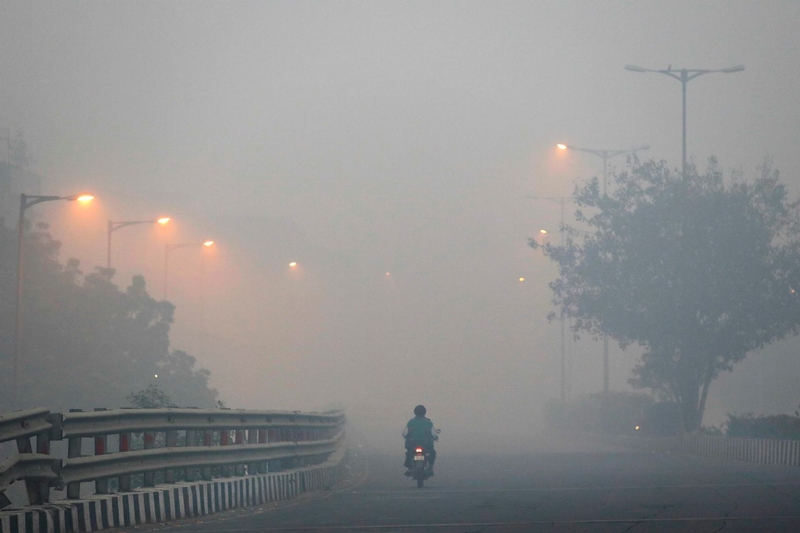Asia
Severe pollution hits New Delhi after Diwali fireworks

Pollution levels spiked across New Delhi and several Indian cities on Monday, the morning after Diwali, the Hindu festival of lights, as smoke from fireworks clogged the air.
The levels of suspended particles smaller than 2.5 micrometres (PM2.5) hovered between 350 and 99m per cubic, the maximum reading possible, at sampling stations of air quality monitoring systems.
The World Health Organisation recommends that people are not exposed to PM2.5 levels of over 25 micrograms in any 24-hour period as the small particles can get deep into the lungs and even the bloodstream.
Tens of thousands of revellers burst firecrackers until late Sunday night, violating a Supreme Court two-hour limit on fireworks, contributing to a grey haze over Delhi.
Pollution levels were at their lowest in three years for Diwali and the day after, Central Pollution Control Board officials claimed, with the overall Air Quality Index recorded at 313 which falls in the “very poor” category, broadcaster NDTV reported.
CPCB official VK Shukla said the toxic pollution was mainly on account of firecracker emissions, traffic congestion and burning of crop residues by farmers in surrounding states but the situation would improve by Tuesday.
Indian cities, particularly in the north, like Lucknow and Noida, also recorded dangerous levels of pollution.
Delhi, a city with a population of 25 million, has been ranked among the most polluted cities in the world in recent years.
The Delhi government has launched a graded emergency action plan to tackle pollution, which includes banning of diesel generators, construction activity as well as running a scheme to control the number of vehicles.




 Davido's Net Worth & Lifestyle
Davido's Net Worth & Lifestyle 
